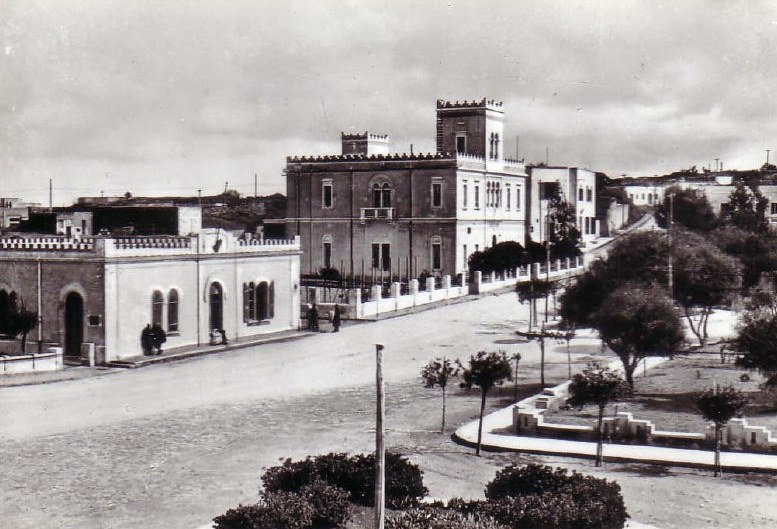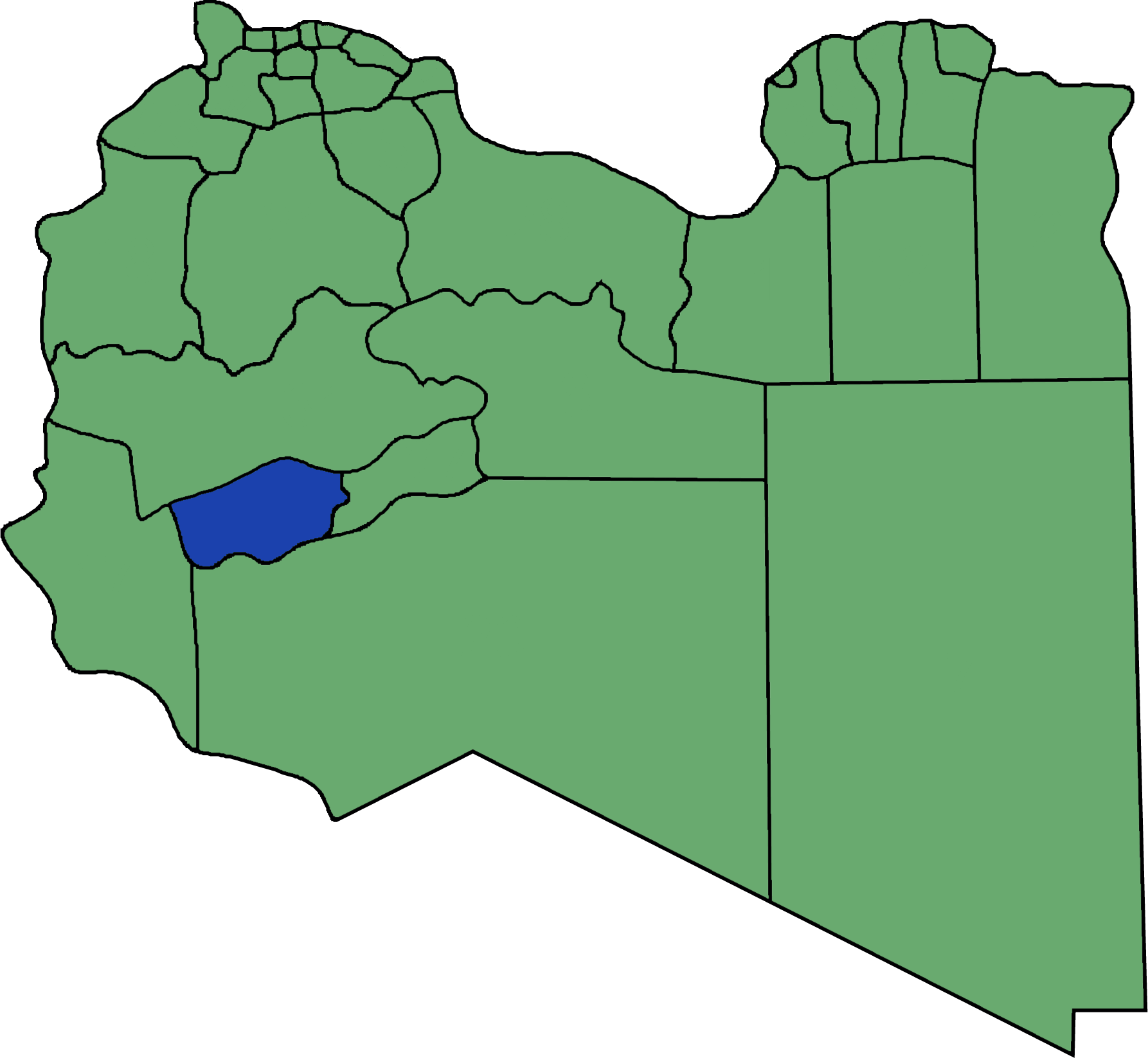|
Wadi Al Shatii
Wadi al Shati ( ar, وادي الشاطئ ), sometimes referred to as ''Ashati'' ( ar, الشاطئ, links=no), is one of the districts of Libya in the central-west part of the country. The area is mostly desert. Wadi al Shati District is named after the depression (former lakebed) of the same name, Wadi Ashati. To the west, Wadi al Shati borders the Illizi Province of Algeria. After the 2007 administrative reorganization of districts, it borders on Nalut in northwest, Jabal al Gharbi in the north, Jufra in the east, Sabha in the southeast, Wadi al Hayaa in the south and Ghat in the southwest. Geography The depression extends east from the town of Ashkeda to the town of Ideary on the west, a distance of about 140 kilometers. To the west, Wadi al Shati borders the Illizi Province of Algeria. After the 2007 administrative reorganization of districts, it borders on the following districts, namely, Nalut in northwest, Jabal al Gharbi in the north, Jufra in the east, Sabha in ... [...More Info...] [...Related Items...] OR: [Wikipedia] [Google] [Baidu] |
Districts Of Libya
In Libya there are currently 106 districts, second level administrative subdivisions known in Arabic as ''baladiyat'' (singular ''baladiyah''). The number has varied since 2013 between 99 and 108. The first level administrative divisions in Libya are currently the governorates (''muhafazat''), which have yet to be formally deliniated, but which were originally tripartite as: Tripolitania in the northwest, Cyrenaica in the east, and Fezzan in the southwest; and later divided into ten governorates. Prior to 2013 there were twenty-two first level administrative subdivisions known by the term ''shabiyah'' (Arabic singular ''šaʿbiyya'', plural ''šaʿbiyyāt'') which constituted the districts of Libya. In the 1990s the shabiyat had replaced an older baladiyat system. Historically the area of Libya was considered three provinces (or states), Tripolitania in the northwest, Cyrenaica in the east, and Fezzan in the southwest. It was the conquest by Italy in the Italo-Turkish War ... [...More Info...] [...Related Items...] OR: [Wikipedia] [Google] [Baidu] |
Libya
Libya (; ar, ليبيا, Lībiyā), officially the State of Libya ( ar, دولة ليبيا, Dawlat Lībiyā), is a country in the Maghreb region in North Africa. It is bordered by the Mediterranean Sea to the north, Egypt to Egypt–Libya border, the east, Sudan to Libya–Sudan border, the southeast, Chad to Chad–Libya border, the south, Niger to Libya–Niger border, the southwest, Algeria to Algeria–Libya border, the west, and Tunisia to Libya–Tunisia border, the northwest. Libya is made of three historical regions: Tripolitania, Fezzan, and Cyrenaica. With an area of almost 700,000 square miles (1.8 million km2), it is the fourth-largest country in Africa and the Arab world, and the List of countries and outlying territories by total area, 16th-largest in the world. Libya has the List of countries by proven oil reserves, 10th-largest proven oil reserves in the world. The largest city and capital, Tripoli, Libya, Tripoli, is located in western Libya and contains over ... [...More Info...] [...Related Items...] OR: [Wikipedia] [Google] [Baidu] |
Brak, Libya
Brak (sometimes written Biraq or Birak ( ar, براك) is a town in the Wadi al Shatii District in west-central Libya. It is the administrative center of the district. Overview The town has a population of 39,444 () and is home to a technical college of Sabha University. Much of the new development in the town is occurring to the north of the old town center, which features gardens and forts from the Italian and Ottoman eras. The technical college "Faculty of Engineering and Technology", now a college of Sebha University, was previously known as the "Higher Institute of Technology", and it is this college that gives much value to the town, as it is a well-known research and academic organization. The college comprises ten distinct departments; six of which are specialized in the engineering arm of the college, namely: *Department of Electronic & Electrical Engineering *Department of Civil Engineering *Department of Petroleum Engineering *Department of Chemistry and materials scie ... [...More Info...] [...Related Items...] OR: [Wikipedia] [Google] [Baidu] |
Vehicle Registration Plates Of Libya
Libya requires its residents to register their motor vehicles and display vehicle registration plates. Current plates are European standard 520 mm × 110 mm. Current Series Libya's current series of license plates entered circulation in 2013, after Libyan Revolution and the overthrow of Gaddafi. Numbers on license plates are in Latin Alphabet, and all plates carry the Arabic text ليبيا meaning ''Libya'', in Naskh Script, either on the right hand side or the right top corner. Private Vehicles Private vehicle license plates are black on white and follow the format ''# - 1 to 999999 The First number (#), a 1 or 2 digit number consists of a code corresponding to Municipality in Libya. This number is separated by a dash from the registration code, which can be 1 to 6 digits. In the city of Tripoli, due to its larger population, 7-digit registration codes are also issued. Foreigner-owned Private Vehicles Foreigner-owned Private vehicle license plates are black on w ... [...More Info...] [...Related Items...] OR: [Wikipedia] [Google] [Baidu] |
Wadi Alshati
Wadi ( ar, وَادِي, wādī), alternatively ''wād'' ( ar, وَاد), North African Arabic Oued, is the Arabic term traditionally referring to a valley. In some instances, it may refer to a wet (ephemeral) riverbed that contains water only when heavy rain occurs. Etymology The term ' is very widely found in Arabic toponyms. Some Spanish toponyms are derived from Andalusian Arabic where ' was used to mean a permanent river, for example: Guadalcanal from ''wādī al-qanāl'' ( ar, وَادِي الْقَنَال, "river of refreshment stalls"), Guadalajara from ''wādī al-ḥijārah'' ( ar, وَادِي الْحِجَارَة, "river of stones"), or Guadalquivir, from ''al-wādī al-kabīr'' ( ar, اَلْوَادِي الْكَبِير, "the great river"). General morphology and processes Wadis are located on gently sloping, nearly flat parts of deserts; commonly they begin on the distal portions of alluvial fans and extend to inland sabkhas or dry lakes. In basin and ran ... [...More Info...] [...Related Items...] OR: [Wikipedia] [Google] [Baidu] |
Illizi Province
Illizi ( ar, ولاية اليزي) is a large provinces of Algeria, province (''wilaya'') in the south-eastern corner of Algeria named after its Illizi, eponymous seat. It borders Ouargla Province to the north, Tunisia to the extreme northeast, Libya to the east, Djanet Province to the south and, to the west, In Salah Province and Tamanrasset Province. As of the 2008 census, the province had a population of 52,333 and an annual growth rate of 4.5%. History The province was created from Ouargla Province in 1984. In January 2013, a In Amenas hostage crisis, hostage crisis occurred in a natural gas facility near In Amenas. Administrative divisions The province is divided into 2 Districts of Algeria, districts, which are further divided into 4 communes of Algeria, ''communes'' or municipalities. Natural resources The area is rich in natural gas. One of the most promising sites for natural gas production is the Ain Tsila gas field in the Isarene permit, some 57% of which is owned ... [...More Info...] [...Related Items...] OR: [Wikipedia] [Google] [Baidu] |
Algeria
) , image_map = Algeria (centered orthographic projection).svg , map_caption = , image_map2 = , capital = Algiers , coordinates = , largest_city = capital , religion = , official_languages = , languages_type = Other languages , languages = Algerian Arabic (Darja) French , ethnic_groups = , demonym = Algerian , government_type = Unitary semi-presidential republic , leader_title1 = President , leader_name1 = Abdelmadjid Tebboune , leader_title2 = Prime Minister , leader_name2 = Aymen Benabderrahmane , leader_title3 = Council President , leader_name3 = Salah Goudjil , leader_title4 = Assembly President , leader_name4 = Ibrahim Boughali , legislature = Parliament , upper_house = Council of the Nation , lower_house ... [...More Info...] [...Related Items...] OR: [Wikipedia] [Google] [Baidu] |
Nalut District
Nalut ( ar, نالوت ''Nālūt'', ber, Nalut ''Lalūt'') is one of the districts of Libya. Its capital is the city of Nalut. The second most notable city is Ghadames. To the north and west, Nalut district borders Tunisia (Medenine and Tataouine Governatorates) and Algeria. Domestically, it borders Nuqat al Khams - northeast, Jabal al Gharbi in the east and Wadi al Shatii in south. In 2007, Nalut District was enlarged to include the Ghadames District, while the eastern part of former Nalut was moved to Jabal al Gharbi. Per the census of 2012, the total population in the region was 157,747 and the average size of the household in the country was 6.9. There were totally 22,713 households in the district, with 20,907 Libyan ones. The population density of the district was 1.86 persons per sq. km. Geography Nalut District is located in the north western part of Libya, called Tripolitania. Most of the country has a flat undulating plain and occasional plateau, with an average el ... [...More Info...] [...Related Items...] OR: [Wikipedia] [Google] [Baidu] |
Jabal Al Gharbi District
Jabal al Gharbi or The Western Mountain ( ar, الجبل الغربي ''Al Ǧabal al Gharbi'', en, The Western Mountains) is one of the districts of Libya. It is named after the Nafusa Mountains. It was formed in 2007 from the former districts of Yafran, Gharyan and Mizda. From 1995 to 1998 Jabal al Gharbi also existed as a ''Baladiyah''. Jabal al Gharbi borders Sirte and Misrata to the east, Murqub to the northeast, Jafara and Zawiya to the north, Nuqat al Khams to the northwest, Nalut to the west, Tripoli to the north, Wadi al Shatii to the south and Jufra to the southeast. Per the census of 2012, the total population in the region was 157,747 with 150,353 Libyans. The average size of the household in the country was 6.9, while the average household size of non-Libyans being 3.7. There were totally 22,713 households in the district, with 20,907 Libyan ones. The population density of the district was 1.86 persons per km2. Per 2006 census, there were totally 104,584 econo ... [...More Info...] [...Related Items...] OR: [Wikipedia] [Google] [Baidu] |
Jufra District
Jufra or Jofra ( ar, الجفرة, Al Jufrah) is one of the districts of Libya. It is in the centre of the country. Its capital is Hun. Jufra was originally one of the 25 baladiya in the administrative system of Libya established in 1988. In 2001, it became a ''Shabiya'', and its territorial extension was reduced. In 2007, under the new 22-shabiya system, its original boundaries were reintroduced. Jufra borders Sirte in the north, Al Wahat in northeast, Kufra in east, Murzuq in south, Sabha in southwest, Wadi al Shatii in west and Jabal al Gharbi in northwest. In 2012, the total population in the region was estimated at 157,747 with 150,353 Libyans. The average size of the household in the country was evaluated at 6.9, while the average household size of non-Libyans was established at 3.7. There were totally 22,713 households in the district, with 20,907 Libyan ones. The population density of the district was 1.86 persons per km2. Per 2006 census, there were totally 20,12 ... [...More Info...] [...Related Items...] OR: [Wikipedia] [Google] [Baidu] |
Sabha District
Sabha ( ar, سبها ''Sabhā'') is one of the districts of Libya. It is located near the center of the country, in the Fezzan region. The capital is the city of Sabha. Sabha District borders the following districts, namely, Wadi Al Shatii in the north, Al Jufrah in the east, Murzuq in the south and Wadi Al Hayaa in the west. Per the census of 2012, the total population in the region was 157,747. The average size of the household in the country was 6.9. There were totally 22,713 households in the district, with 20,907 Libyan ones. The population density of the district was 1.86 persons per sq. km. Geography Sabha District borders the following districts, namely, Wadi Al Shatii in north, Al Jufrah in east, Murzuq in south and Wadi Al Hayaa in the west. Sabha District is in the Fezzen region (Libyan Desert), a section of the Sahara Desert. The Sabha Air Base is in the district. The Gaberoun oasis, on a spring fed lake, is a popular tourist attraction in the district. L ... [...More Info...] [...Related Items...] OR: [Wikipedia] [Google] [Baidu] |
Wadi Al Hayaa District
Wadi al Hayaa ( ar, وادي الحياة ''Wādī al Ḥayāh'') is one of the districts of Libya. Its capital is the city of Ubari. As of 2006, it had a population of 72,587, area of and a population density of 2.28 persons per square kilometer. The district is bordered by Wadi al Shatii in north, Sabha in east, Murzuq in south and Ghat in the west. The district is part of the Fezzan geographical division of Libya which is mostly desert. Geography The district is bordered by Wadi al Shatii in north, Sabha in east, Murzuq in south and Ghat in the west. The district is part of Fezzen geographical division of Libya which is mostly desert. The region receives an annual rainfall of . There are no perennial rivers in the region, but the region is abundant with groundwater aquifers. Libya has mostly a flat undulating plain and occasional plateau, with an average elevation of around . Around 91 per cent of the land is covered by desert, with only 8.8 per cent agricultural land (w ... [...More Info...] [...Related Items...] OR: [Wikipedia] [Google] [Baidu] |





